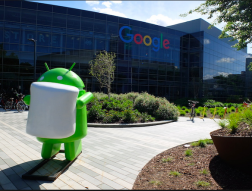Fast Company – 9 principles of innovation at Google
WANT TO KNOW WHAT’S IN GOOGLE’S SECRET SAUCE? CHIEF SOCIAL EVANGELIST GOPI KALLAYIL DISHES OUT THE TECH GIANT’S SUCCESS RECIPE.
Kallayil shared his insights at this week’s San Francisco Dreamforce summit. Here are the nine rules that any enterprise, large or small, can adopt to steal Google’s innovative culture.
1. INNOVATION COMES FROM ANYWHERE
It can come from the top down as well as bottom up, and in the places you least expect. For example, a medical doctor on Google’s staff argued persuasively that Google had a moral obligation to extend help to those typing searches under the phrase “how to commit suicide.” He ignited the charge to adjust the search engine‘s response so that the top of the screen reveals the toll free phone number for the National Suicide Prevention Hotline. The call volume went up by nine percent soon thereafter. The same change has been adopted in many other countries.
2. FOCUS ON THE USER.
Worry about the money later, when you focus on the user, all else will follow. Google improved the speed of its search capabilities with predictive analysis so search suggestions come up after the user types a few keystrokes. This Instant Search feature saves the user a few microseconds with each entry. Google sales reps were concerned that this shortened the time customers would view ads, but the company went ahead and believed that it was worth the risk.
End result? Thanks to Instant Search, Google estimates the time saved is equivalent to giving back mankind 5,000 years after a year of collective use. “Create a great user experience and the revenue will take care of itself,” says Kallayil. In addition, more customers will be attracted to your product’s increased benefits.
3. AIM TO BE TEN TIMES BETTER
If you come into work thinking that you will improve things by ten percent, you will only see incremental change. If you want radical and revolutionary innovation, think 10 times improvement, and that will force you to think outside the box. For example, in 2004, Google started its Google Books project and set forth a challenge to organize all the world’s information and digitize all the books ever printed in history.
Google co-founder Larry Page built his own book scanner, and the initial process required having someone manually turn its pages in rhythm, one at a time, according to the pace of a metronome. Google has now scanned 30 million of the 130 million books they first set out to scan, and dozens of libraries around the world are participating in the project.
4. BET ON TECHNICAL INSIGHTS
Every organization has unique insights, and if you bet on it, it leads to major innovation. Google engineers, not the auto industry, came up with the idea of driverless cars after seeing that millions of traffic deaths come from human error. Google already had all the building blocks in place to build a self-driving car–Google Maps, Google Earth, and Street View cars. Working with an artificial intelligence team at Stanford University, Google engineers have produced experimental cars that now have travelled to Lake Tahoe and back to the Bay Area and have given the blind more independence by driving them to shop and carry out errands.
5. SHIP AND ITERATE
Ship your products often and early, and do not wait for perfection. Let users help you to “iterate” it. When Chrome was launched in 2008, every six weeks Google pushed out an improved version. “Today, using that approach, Chrome is the Number One browser in many countries,” says Kallayil, “You may not have perfection in your product, but trust that your users will get back to you.”
6. GIVE EMPLOYEES 20 PERCENT TIME
Give employees 20 percent of their work time to pursue projects they are passionate about, even if it is outside the core job or core mission of the company. “They will delight you with their creative thinking,” Kallayil promises. At Google, engineers and project managers have the freedom to set aside one day a week to work on a favorite idea. Many can wind up as products or product improvements. Case in point: an engineer planning a trip to Spain found that he could not get a close-up view of the hotel since the road was too narrow for the Google Street View car to enter. He later adapted a Street View camera to fit on a specially-made Google tricycle to go places too narrow for a car and tourist locations that ban autos from approaching the premises.
7. DEFAULT TO OPEN PROCESSES
Make your processes open to all users. Tap into the collective energy of the user base to obtain great ideas. When Google created the Android platform, it knew it could not hire all the best developers on the planet. For that reason, it “defaulted to open,” and encouraged developers outside of Google to create apps for the one billion people using Android devices daily. “That is how an ecosystem is formed,” says Kallayil. In marketing, Google asked users how they would market its voice search app, and children sent clever videos that rivaled the campaigns of the big ad agencies.
8. FAIL WELL
There should be no stigma attached to failure. If you do not fail often, you are not trying hard enough. At Google, once a product fails to reach its potential, it is axed, but the company pulls from the best of the features. “Failure is actually a badge of honor,” he says. “Failure is the way to be innovative and successful. You can fail with pride.”
9. HAVE A MISSION THAT MATTERS
“This is the most important principle,” Kallayil says. “Everyone at Google has a strong sense of mission and purpose. We believe the work we do has impact on millions of people in a positive way.” Each person should have his or her own story.
—Kathy Chin Leong is a technology writer who lives in Sunnyvale, CA.
